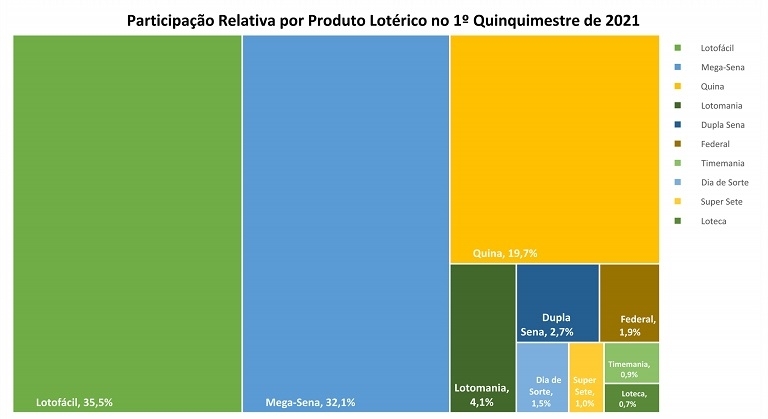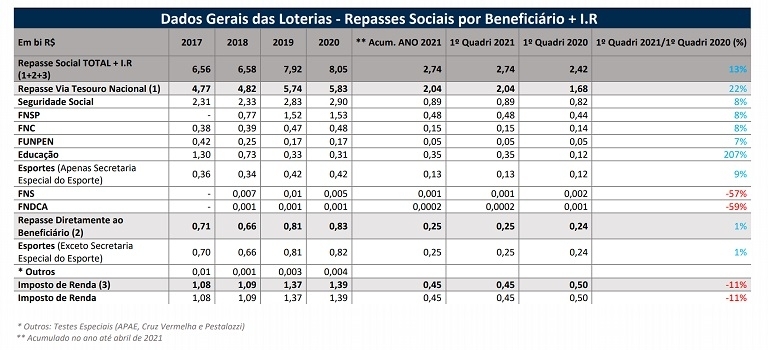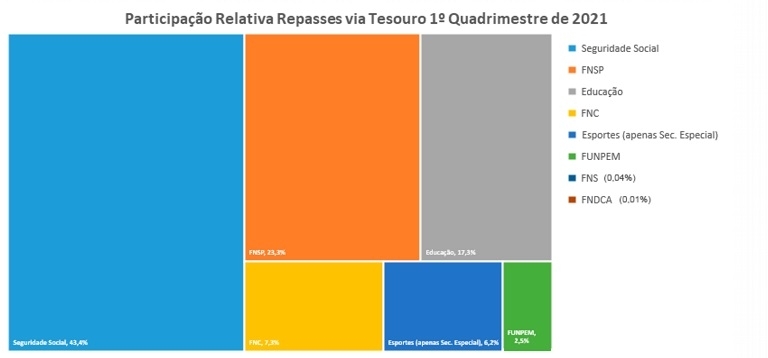


There is a constant growth in lottery collections from 2017 to 2020, with an even better performance expected for the year 2021. Even with the impact resulting from the COVID-19 Pandemic, there was an increase in the nominal collection in 2020 of almost all federal lotteries operated by Caixa Econômica Federal (CEF), in relation to previous years.
Considering the nominal collection of all federal lotteries operated by Caixa Econômica Federal (CEF), from January to May 2021, there is a growth of 9.6% compared to 2020 and 28.9% to 2017 in the comparison between same periods, which denotes the solidity of the national lottery market even in the face of difficulties arising from COVID -19.

The table above shows the nominal collections by lottery product of federal lotteries, from January to May 2021. The highlights are:
1. Increase in the sale of Loteria Federal, a traditional ticket lottery, which resulted in 58% growth when compared to the same period last year;
2. Increased sales of Lotofácil and Quina products, which grew 38% and 32%, respectively, compared to the same period last year. When compared to the same period in 2017, the sales growth of Lotofácil reaches 75%; and
3. Significant increase in the sale of the Loteca, a traditional sports lottery in the country, existing since the 1970 World Cup, which, in the period analyzed, registered an increase of 159% in sales, when compared to the same period in 2020.

The relative share of the lottery market in Brazil remains largely centered on three large lottery products: Loto-fácil, Mega-Sena and Quina, accounting for 87% of sales.
It is the first time that Lotofácil surpasses the Mega-Sena when compared to any quarters analyzed since its creations. This is a direct consequence of the increase in the number of Lotofácil contests, which became daily since August 2020, and the little accumulation of regular Mega-Sena contests.

Social transfers, via the National Treasury, to finance various public policies, in the first four months of 2021, exceed R$ 2.04 billion (US$ 407m), with an increase of 22% when compared to the same period in 2020.
Emphasis on the significant increase in resources earmarked for education, with a 207% increase, due to the reversal of one of the Mega da Virada 2020 awards, with the prescription for not redeeming the award, which occurred in the period.

The chart shows the relative participation of each beneficiary in the social transfers that enter the National Treasury Single Account, highlighting the portions destined to Social Security, the National Public Security Fund and Education, which together represent 83.9% of social transfers via the National Treasury.
In addition to these specific destinations, there was the payment of Income Tax of approximately R$ 450 million (US$ 89.9m), which can be used to cover any government expense. Thus, in the 1st four months of the year alone, the sector allocated approximately R$ 2.5 billion (US$ 500m) to the National Treasury (Social Transfers+ I.R) to meet important government actions, as established in the legislation.
Source: SECAP/ME